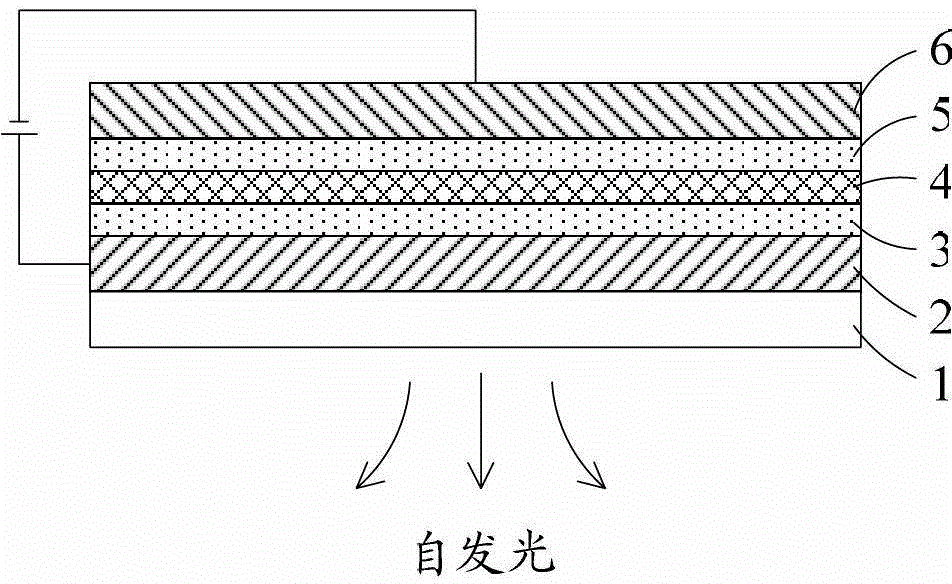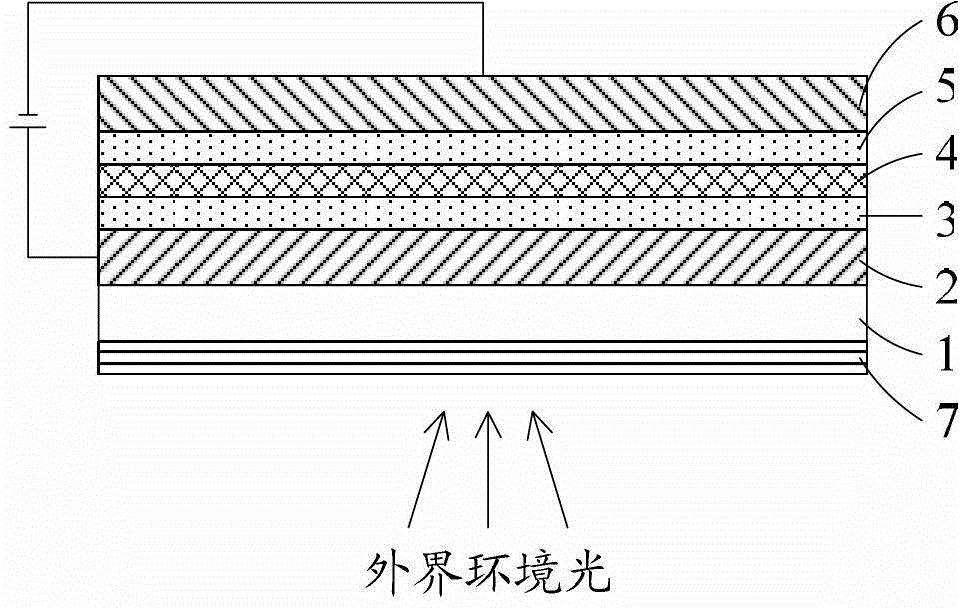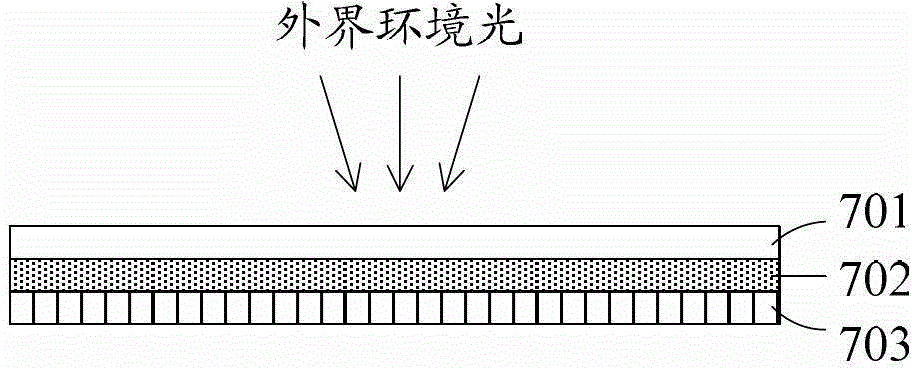A polarizer and a display device
A polarizer and polarizing layer technology, applied in the field of polarizers and display devices, can solve the problems of incomplete absorption and light leakage, and achieve the effect of improving outdoor readability and reducing reflection
- Summary
- Abstract
- Description
- Claims
- Application Information
AI Technical Summary
Problems solved by technology
Method used
Image
Examples
Embodiment 1
[0056] This embodiment provides a polarizer, which is used in conjunction with a reflective layer. The polarizer includes a polarizer layer and a compensation layer. The compensation layer is arranged between the polarizer layer and the reflective layer, and incident to the polarizer The light incident on the compensation layer is absorbed by the absorption axis of the polarizing layer and then enters the compensation layer. The compensation layer and the reflective layer cooperate to convert the light incident on the compensation layer into a line whose polarization direction is consistent with the absorption axis direction of the polarizing layer. Polarized light is thus absorbed by the polarizing layer. The reflective layer can be made of any material capable of reflecting light, for example, it can be an electrode layer in an OLED display device.
[0057] That is to say, the light incident on the polarizer along various directions passes through the absorption axis absorpt...
Embodiment 2
[0061] Such as Figure 8 As shown, this embodiment provides a polarizer, which is used in conjunction with a reflective layer (not shown in the figure), and the positional relationship between the polarizer and the reflective layer is: along the incident direction of ambient light, the polarized light sheet, reflective layer. The polarizer includes a protective layer 701, a polarizing layer 702, and a compensation layer; the compensation layer is arranged between the polarizing layer and the reflective layer, and includes an optical compensation film 704 and a quarter-wave plate 703, and the optical compensation film 704 is disposed between the polarizing layer 702 and the quarter-wave plate 703; the protective layer 701 is disposed on the surface of the polarizing layer 702 away from the compensation layer and the reflective layer.
[0062] Wherein, the protective layer 701 needs to undergo surface treatment, and those skilled in the art can perform different surface treatme...
Embodiment 3
[0076] The difference between this embodiment and embodiment 2 is:
[0077] In this embodiment, the quarter-wave plate 703 has a refractive index factor Nz of 0.4 to 0.6, a phase retardation R0 of 110 nm to 160 nm, and the direction of the slow axis of the quarter wave plate is in line with that of the polarizing layer. The included angle in the transmission axis direction is from plus 40° to plus 50° or from minus 50° to minus 40°.
[0078] Preferably, the refractive index factor Nz of the quarter-wave plate 703 is 0.5, the phase retardation R0 is 137.5 nm, and the direction of the slow axis of the quarter-wave plate is equal to the direction of the transmission axis of the polarizing layer. The included angle is plus 45° or minus 45°.
[0079] The compensation layer of the polarizer described in this embodiment adopts the optical compensation film 704, which solves the problem of oblique light leakage caused by the deflection of the transmission axis of the polarizing layer...
PUM
 Login to View More
Login to View More Abstract
Description
Claims
Application Information
 Login to View More
Login to View More - R&D
- Intellectual Property
- Life Sciences
- Materials
- Tech Scout
- Unparalleled Data Quality
- Higher Quality Content
- 60% Fewer Hallucinations
Browse by: Latest US Patents, China's latest patents, Technical Efficacy Thesaurus, Application Domain, Technology Topic, Popular Technical Reports.
© 2025 PatSnap. All rights reserved.Legal|Privacy policy|Modern Slavery Act Transparency Statement|Sitemap|About US| Contact US: help@patsnap.com



